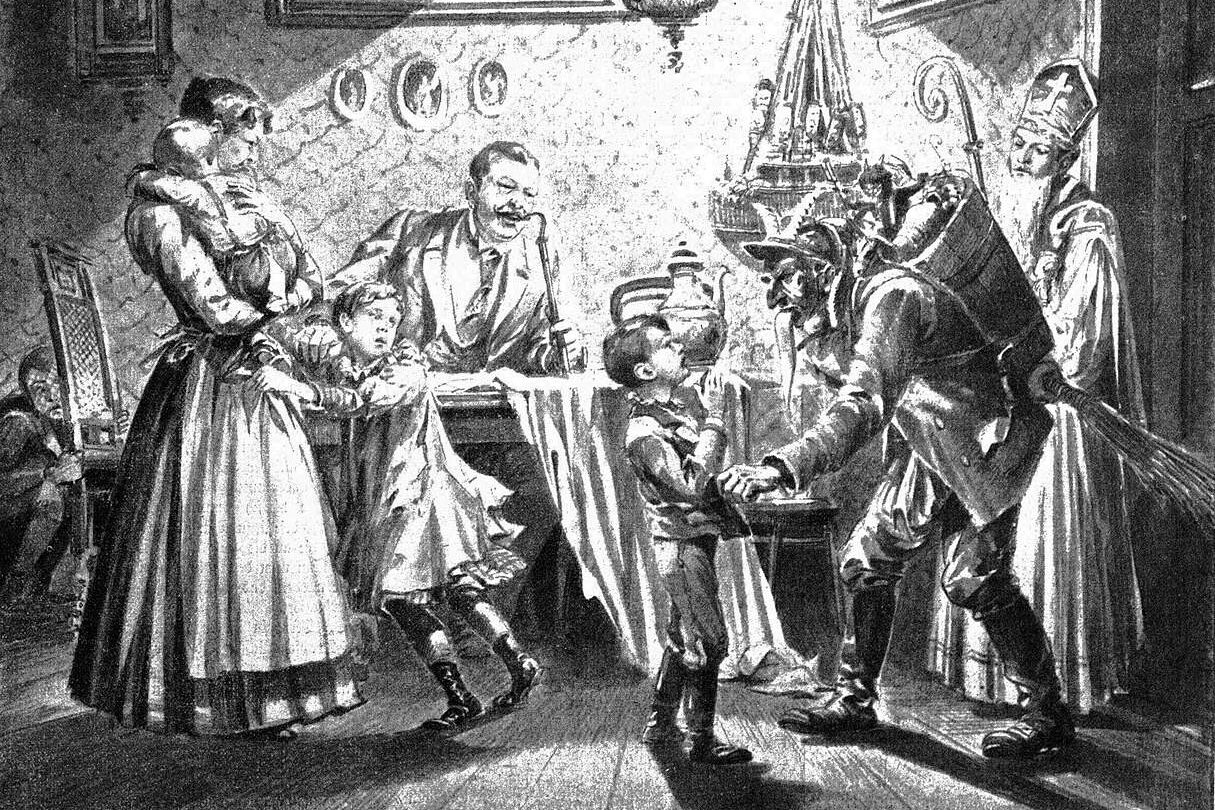Jingle bells, jingle bells, jingle all the way! Oh, what fun it is to ride in a one-horse open sleigh! Yes, the Christmas spirit is here and we’re all for it. But, have you been a good kid this year? God forbid you’re one of those naughty kids who fool around all year. If so, you better hide now because Christmas monsters are coming to get you!
However, it’s supposed to be a happy day, right? Why on earth do we have terrifying creatures haunting misbehaving toddlers? I thought the only thing we should fear on holidays is our angry moms if we wake up too late. I didn’t know Santa has a legion of his scary counterparts to deliver punishment for tantrum throwers.
These creatures, such as Frau Perchta and Krampus might come from tale tellers’ creativity. But, they also came from ancient pagan beliefs far older than Christianity. Apparently, how Christmas monsters get the naughty kids has a lot of context to uncover.
The Pagan Creatures Turned Into Monsters

Monsters don’t come out on their own. There is always a lore behind them, which often takes influence from their surrounding culture. It seems like, somewhere along the history of mankind, Christianity assimilated some pagan creatures into Christmas.
For example, Frau Perchta, also known as the Christmas witch. Modern interpretations of her say that she roams the lands of Austria, Germany, and Switzerland, punishing people who left their weaving unfinished and their homes untidy.
What’s more terrifying about Frau Perchta is her brutal way of unleashing her wrath. It’s said that she would disembowel those she punishes and replace their innards with pebbles and rocks. However, she also has a sense of generosity toward those she deems as good people.
Interestingly, her origin isn’t from the Christian religion. Rather, Frau Perchta originates from Alpine paganism. So, how did she get incorporated into the Christmas celebration? It was common for the church to put goddesses of paganism into Christian tales and perceive them as less than civilized creatures.
Baca Juga: Monsters, Literature, And The Innate Fears In Society
The Dark Side Of Christmas And Damnation For Naughty Children

Monsters are not that picky when it comes to their dinner menu. Cattle, young maidens, or just an unsuspecting random person, they’d be happy to gobble them. However, it seems like little kids with an attitude are coveted delicacies among monsters.
However, some of them take it to the extremes. Take a look at Krampus. He is depicted as a demonlike creature with horns, goatlike furs, and hooves. Krampus is the exact counterpart of Santa Claus. When the white-bearded man gives gifts to well-behaving children, Krampus kidnaps the little menaces and takes them to hell.
The modern interpretation of Krampus is a bit different, though. In Austria, he is widely popular due to the annual Krampus parade. This is where the Austrians celebrate the Krampus legend by gathering together in scary Krampus costumes.
Uniquely enough, some folklore of Central and Eastern Alpine tell of the partnership between Santa and Krampus. Santa would reward the good kids, and Krampus would get to keep the bad ones. This is why Christmas monsters get the naughty kids, to be the whip that encourages good behaviors.
It’s A Cultural Melting Pot With An Intention

What happened to Frau Perchta and Krampus is a phenomenon of cultural assimilation. When two or more beliefs are put together in the same geography, it’s common that they blend, exchange stories, and make different versions of each other.
Japan also had a similar situation back in the Edo period, the age of art and literature explosion in Japan. Believe it or not, the popular theme of cat girls dates back to this time. With the absence of war, people are free to explore their deepest and darkest imagination. Furthermore, the blossoming economy means people travel much more, making the exchange of folklore easier.
When you think about it, how Christianity adopted some of these pagan creatures and molded them into their narrative is fascinating. This is another example of how literature evolved throughout history. Christianity creatively incorporated what the pagans created. And then, they made it a form of education for children and the mass in general.
The existence of Santa and the Christmas monsters represents a very deep-rooted psychological method in education. To punish the bad behavior, and to reward the good ones. It greatly resembles the American most influential psychologist’s thinking, B. F. Skinner. Skinner had a huge impact on behaviorism. This is a theory of learning grounded on the idea that our actions are affected by external stimuli, such as reward when we’re correct, and punishment when we’re wrong.
Baca Juga: How Stories Shape Moral Compass In Culture
